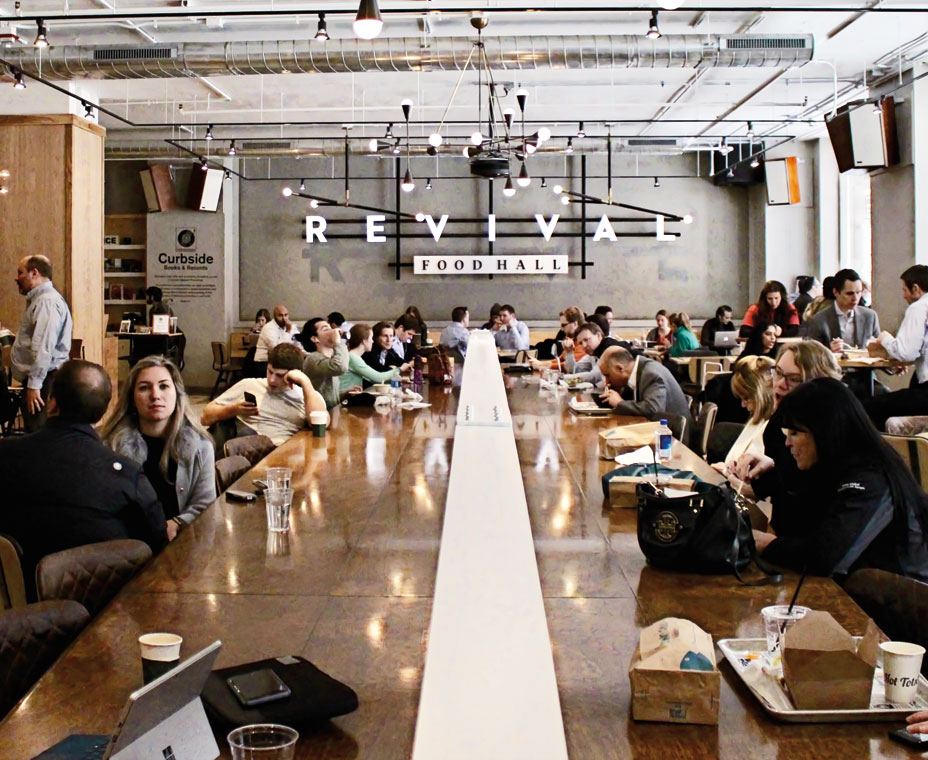It’s been a transformative decade for limited-service restaurants. The industry has evolved, from the invasion of food trucks to the explosion of higher-quality, service-oriented fast casuals. As consumers continue to expect high-caliber, convenient meals, would-be operators are limited only by their imaginations (plus their available cash and fundraising ability). Here’s a look at how these enterprising operators are getting creative and bootstrapping new restaurants.
Next-gen franchisees
For many entrepreneurs, the franchise model represents a (slightly) lower-risk route to entering the competitive restaurant landscape. Franchises are increasingly attractive as chains pivot toward being more tech-savvy and quality-minded.
In 2015, Pita Pit franchisees Blake Weber and Joseph Warhurst opened their first location near the University of San Diego in California. They were drawn to the model partly because they lacked restaurant experience, but also because they loved the health-oriented menu. Being a smaller chain with about 300 locations in 39 states, Pita Pit’s upfront costs were more manageable, too.
“A lot of the big-name places cost more upfront, and the royalties tend to be higher,” Weber says. “Competition-wise, big-name brands have so many locations, whereas Pita Pit didn’t have a big presence in the San Diego market, which is what we’re interested in.”
All told, Weber and Warhurst invested about $450,000—including the build-out and $20,000 franchise fee, which was discounted 20 percent because Warhurst is a veteran—plus an ongoing 5 percent royalty fee. They used the first store’s profits and a small bank loan to open a second Pita Pit near San Diego State University this spring.
Hitting the road
The recession-era insecurity of young operators like Roy Choi, who launched his Kogi Korean BBQ taco truck in 2008 in Los Angeles, jumpstarted a food-truck industry that has since eclipsed $1.2 billion in annual sales, according to industry market research firm IBISWorld.
The enticing combination of low barrier to entry and the buzz surrounding food trucks motivated Coolhaus cofounders Natasha Case and Freya Estreller to scrape together enough cash to buy a beat-up postal van and launch their L.A. ice cream sandwich truck in 2009.
“It was extremely low overhead for us starting out—essentially cost of goods, very minimal labor, and incidentals like gas and the [mobile vendor] permit,” Case says. In L.A., a mobile truck permit fee is roughly $600–$790; this amount varies widely by city.
Pricing was also an important consideration for Atlanta-based Yumbii, an Asian-Mexican fusion food truck that founder Carson Young rolled out in 2010. From varying tax rates to the changing prices of food, creating a balanced margin with food costs has been an ongoing challenge.
“Since we run our food trucks throughout a number of different cities and counties, our tax rates fluctuate depending on where we’re vending,” says Young, who self-funded Yumbii’s two food trucks, as well as the brick-and-mortar shop that opened last year. In the brick-and-mortar taco shop, the challenge comes mainly from inflation and the varying costs of food.
A restaurant without the restaurant
Sarah Weitz and Sam Barron, husband-and-wife owners of The Fat Shallot and Fat Pickle food trucks in Chicago, had also planned to expand their fleet of food trucks, but instead saw an opportunity last year to switch gears and become a vendor at Revival Food Hall, one of the city’s hottest entrants into this budding trend. It was particularly tough to pass up, given that the city was cracking down on food truck ordinances limiting parking times and locations.
Weitz and Barron had no intention of opening a restaurant, but when local hospitality development company 16” on Center approached the pair regarding Revival Food Hall, Weitz says, it felt like a good entry point to what it would be like to open a restaurant. “Except they’re going to build it out, do all the marketing, hire a PR agency, and bring us our customers—how lucky,” she adds.
Each of the 15 fast-casual vendors at Revival has an existing foodservice operation. 16” on Center outfitted the former bank building for foodservice, acquired a liquor license, and gave vendors an option to cook or not in their individual stalls.
In addition to the upfront costs like signage and individual equipment to suit their needs, each vendor pays rent, plus a common area maintenance fee, which covers everything from security guards to nightly cleaning, electricity, water, and garbage removal. For Weitz and Barron, adjusting to the extended hours, the addition of breakfast menus, and sharing a space with 14 other competitors was worth it.
“Everyone feeds on one another as a community and co-op, and motivates other vendors to do better food and customer service—all those things that make better businesses,” Weitz says.













